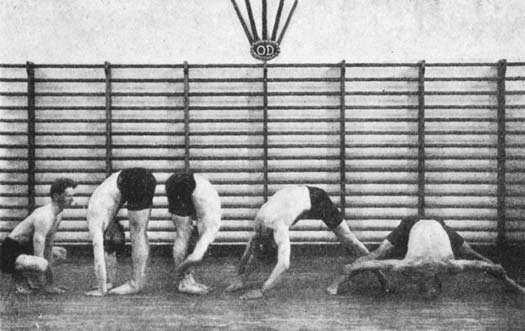Lessons from the Zoom Room
It’s been three weeks, counting the practice session that my students and I did before term started. Two full weeks of classes, discussion sections, and office hours, more hours than I have ever been on camera in that short of time. Not as many as some, I am well-aware. But more than I had been used to.
It’s exhausting. It’s exhilarating. It’s ... well ... different from what I had expected. Perhaps the strangest aspect of the transition to Zoom is the sensation that I get not from teaching, when I am diligently looking at the camera for the sake of my students, but when I am a student (fiddle class) or participant (faculty meeting) looking at myself looking at everyone else. Obviously, I can’t show you a screen shot of those meetings because that would mean showing you people whom I am not supposed to be able to take pictures of—except I can, because there we all are on screen together, visually identical in our little Zoom boxes. It is humbling, but also oddly sobering. I have never been so self-conscious of myself as “professor” as now after having watched myself on camera for the past three weeks trying to behave like a “professor” while sitting in the back bedroom of my apartment.
 |
| Not my department |
Other lessons have been easier to absorb. I figured out why having music playing as the students came into the Zoom room was so important. I had thought that it was simply about giving the videos a nice intro, but the music also has the effect of setting the tone for the room. “I feel like I’m in Rivendell,” one student exclaimed as he joined yesterday. (Howard Shore’s symphonic setting of the music for the movies was playing.) Zoom rooms feel so airless; it is very difficult to generate any kind of enthusiasm as people join. Walk into a real room—a physical space inside a building—and the energy builds as more people join, but with a Zoom room, each new person makes all the boxes smaller, until the screen is filled with badly-lit tiles all more or less the same. The music helps enchant the space, if you will. Make it seem like something magical might happen while we are there.
There have been positive effects. Because I am looking at the camera while I am talking to the students, I am not looking at all the little tiles. I can only see those if I look down to read the chat or check who has been raising their hands. I know from my years doing Zoom recordings with my friends in Three Kraters Symposium how tempting it is to look at the screen while other people are talking, but I also know how important it is not to look, if, that is, you want to listen properly to what people are saying. Counterintuitive, I know. The whole point of Zoom is to give us the sensation of being in the same room with each other so that we can see each other’s faces while we are talking, but it doesn’t work. At least, it doesn’t work if what you want to do is listen carefully to what everyone is saying and be able to respond properly while being recorded.
Prepping for teaching on Zoom is also different from what I had expected. The course I am teaching this quarter is one that I have taught every three years since 2005, so the material is familiar, as is the format that I am using: discussions, blog posts, a final project. But I cannot simply take the lesson plans that I have from previous years and speak them into the camera—the bandwidth is too narrow, as it were. My lesson plans were designed for classrooms of up to 100 students, spoken to a room filled with students. They have a performance arc that depends on using the blackboard, walking around the room, showing some slides, but always drawing on the energy of the room to build the argument. Sitting in the back bedroom of my apartment looking at the camera, I have none of that feedback, none of that supporting equipment. All I have is my hands and my voice.
Everything has to be stripped down and simplified, including my notes. This is a practice I learned prepping for our videos for Three Kraters, but I had not expected to have to use it for class. All of the depth and complexity of the notes that I have is useless if I cannot speak succinctly into the camera, without wandering off on long tangents as is my wont. Not having the blackboard, I need other visuals to help anchor the points that I want to make, which has meant making slides for every class, not just the ones where I show maps and trees. To make the videos run smoothly, I have to make sure that the slides come in the right order, which means predicting how the flow of the discussion is going to go beforehand. It is like playing God—predicting the outcome of the story when the point is to get the students to participate as they will.
This is what God must feel like all the time. Think about it, what it meant for God to become incarnate, enter into the world He had created in order to speak with his creatures in language that they could understand. He had none of the power that He was used to having—no great gestures with lightning and thunder, his voice reduced to the volume of a mere man’s. Looking at his creatures, He knew they were more than just flickering images of the present, transient and mortal. How hard it must have been for Jesus to look at their faces while they were talking, when what He wanted to do was listen to their hearts. There He was on earth, when He was used to being in Heaven, having to behave properly as both God and man. How very airless it must have felt not to be in the midst of the angels singing their praises to God.
Although I am enjoying the challenge of teaching by Zoom, I hope very much that this is not our “new normal.” We were made to have bodies and voices, not just to be images on a screen. We were made to have a full life in which we engage with each other in body, not just with our minds. There is a lie in Zoom—that it shows us who we truly are by projecting our images onto the screen—but nothing in this experience compares with being in the same room with each other, breathing together the same air. How much more must God long for us to be in the same room with Him, that He entered into our thin and mortal existence in order to lift us up out of it into His glory?
Pray, my brothers and sisters, that we encounter Him again in Body soon.
For the rule that I am keeping during the quarantine, see Corona Wisse. For tips on Zooming more effectively, see Zoom U: Tips and Tricks. For my students’ blogposts, see Tolkien: Medieval and Modern.








"It is like an out-of-body experience without being dead." I love this. I also listen better when I am not looking at the source of the sound. Closing your eyes would clearly be awkward here. Very challenging! Enjoyed your reference to God. Interesting way to look at it. Great post!
ReplyDeleteI absolutely loved the reference to God, it made so much sense. We are doing Zoom church and it's awkward, but getting easier.
ReplyDelete